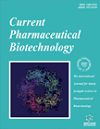
Full text loading...

This review aims to systematically investigate the existing research on the effects of anthocyanins on cognitive functions and their underlying mechanisms involved. It provides detailed insights into their development and potential applications.
An extensive review and analysis of various animal experiments and human studies were performed using databases, such as Web of Science, Sci-Hub, EI, ScienceDirect, and PubMed. The keywords, titles, or abstracts searched included, but were not limited to, 'Anthocyanin', 'Cognition', 'Anti-inflammatory', 'Antioxidation', 'Autophagy', and 'Insulin resistance'. The search was conducted covering the period from January 2017 to November 2025. Our aim was to summarize the evidence concerning the impact of anthocyanins on cognitive functions and to explore their underlying mechanisms. We analyzed these mechanisms in terms of antioxidant activity, reduction of neuroinflammation, regulation of autophagy-related pathways, and central insulin sensitivity.
A substantial body of research has indicated that anthocyanins exert beneficial effects on cognitive function. In models exhibiting cognitive impairment, supplementation with anthocyanins has been shown to significantly improve cognitive capabilities. The underlying mechanisms of action are primarily attributed to the following factors: the strong antioxidant properties of anthocyanins, which effectively neutralize free radicals in the brain, thereby diminishing oxidative stress and protecting neuronal integrity and functionality; the inhibition of neuroinflammatory responses, which alleviates the detrimental impact of inflammatory agents on neural tissues and contributes to the maintenance of the brain's homeostatic environment; and the regulation of autophagy-related pathways and central insulin sensitivity, which collectively reduce damage to proteins linked to cognitive function and enhance learning and memory processes.
As the global population ages rapidly and the prevalence of cognitive decline-related diseases, like Alzheimer's, increases, there is a pressing need to create medications that can improve cognitive abilities. Researchers are paying close attention to anthocyanins, natural substances found in plants such as blueberries and purple grapes, due to their significant potential to influence cognitive functions. Nonetheless, further clinical trials are necessary to validate the appropriate dosage and bioavailability of anthocyanins, and certain limitations must be acknowledged.
In the present study, it was found that anthocyanins can improve cognitive impairment in both humans and animals. Their mechanisms of action primarily involve anti-inflammatory effects, antioxidant activity, modulation of autophagy, and the reduction of central insulin resistance. This research lays the groundwork for future studies on the role of anthocyanins in cognitive function.

Article metrics loading...

Full text loading...
References


Data & Media loading...